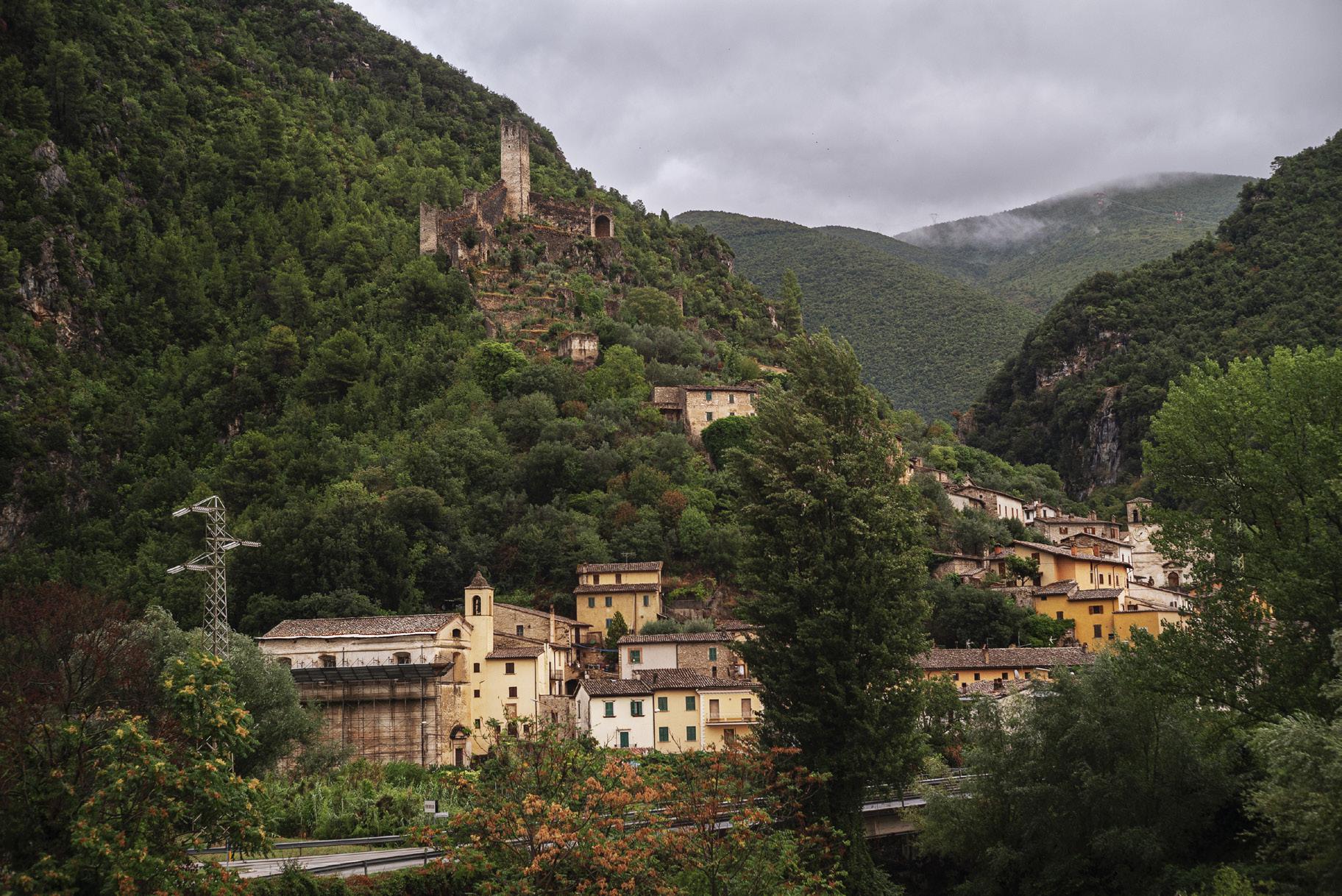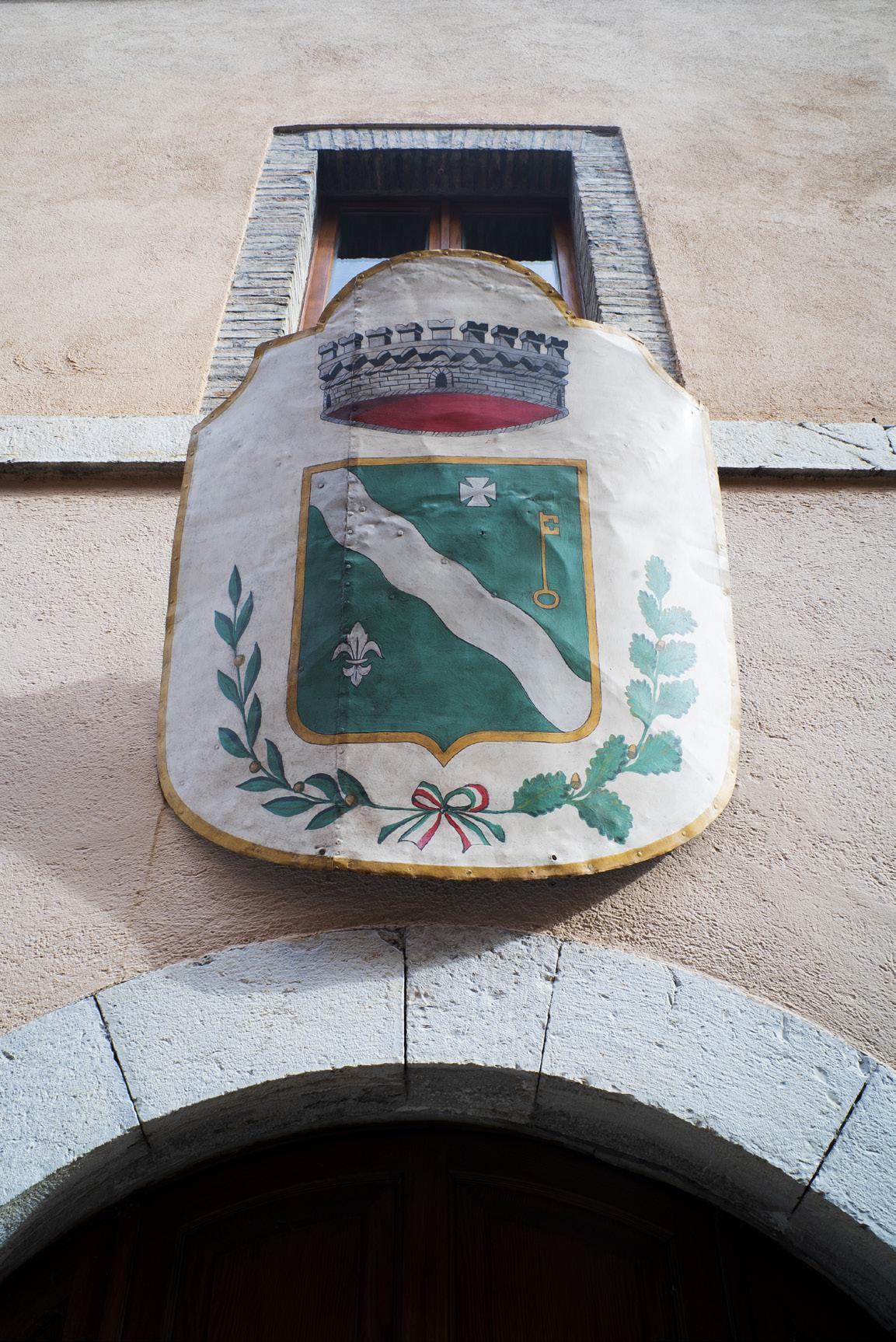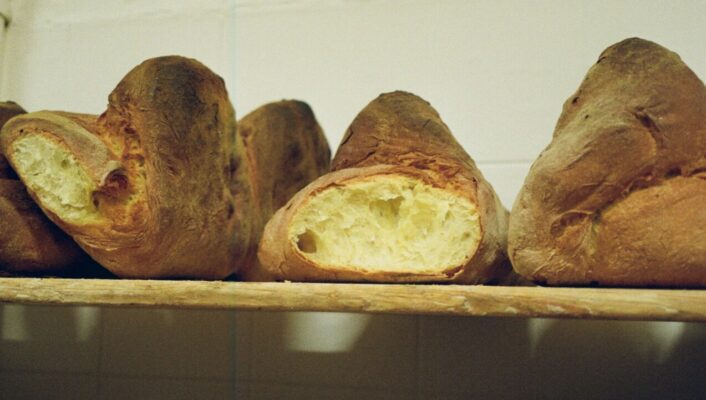A rabbit hole into Wonderland.
A wardrobe opening onto the kingdom of Narnia.
A station platform leading to a school of Wizardry.
Every magical place has a special gateway. Valnerina in Umbria has a 4km tunnel that uncovers an enchanted valley filled with hermits, beer masters, mummies, templars and forgotten fruits.
In a semi-post Covid Italian summer, I rode my motorcycle across Tuscany into Umbria, a region often forgotten by tourists and even more so by Italians. I was drawn to Ferentillo, a small town clinging to the sides of the valley, to try a local beer named after a master (Magester) sculptor. This sculptor was so vain as to put his own name, Ursus, on his artwork — an altarpiece dating back to 740 AC.
The moment I rode out of the tunnel I found myself thrown into a deep valley, with sides so steep you couldn’t see anything beyond it; all sounds were muffled by the dark forests around me. It is common to see castles and towers sitting atop the hills and mountains all across Italy but the Valnerina has entire towns and towers built along the steep walls of the valley. Like goats perched on precariously balanced rocks, these towers have been standing solidly for over a thousand years, as they protect the valley from enemies and intruders, including tourists.


My point of contact was Roberta. A small but fiery girl, born locally but a citizen of the world. Someone who has travelled but always went back to her valley, because “this is where I belong”.
We connected through Instagram when she posted about an ancient Roman food dressing (Colatura di Alici) which brought us, of course, to talk about food. I suddenly discovered so many dishes I had never even heard about from areas barely 3 hours by car from my hometown, Florence.
Along with Giovanni, she sees to brewing their own beer. Magester (from Magester Ursus the “vain sculptor”) is a beer produced with local ingredients, including la Merangola. An ancient forgotten fruit specifically local to this area, it’s a very bitter orange with a thick skin. Roberta explained that because of the latitude and climate, the olives around them used to be pressed very late in the year, yielding an incredibly bitter oil. To balance its bitterness, the monks (from their abbeys across the valley) would spread some merangola or a few drops of its juice on their bread before eating it, adding a blast of floral notes to the olive oil. Recently, this plant has become part of the register of genetical resources of the region of Umbria. Now this fruit is used for perfumes, liqueur, jam and honey and the Bianca Merangola, the famous award winning Magester beer.
Ferentillo is home to many unusual characters, such as Simone, Roberta’s husband. The night I found myself in this town, it was the holiday of San Sebastiano, the saint is also patron of the town. Due to Covid, the typical procession was canceled, but mass wasn’t, it simply took place outside. Religion is still very important for small local communities like this one and that’s something Simone knows very well. During this long Italian Covid-ridden winter Simone, along with a few villagers, set up the church megaphones so that mass could be blasted and echo through the entire valley, bouncing off the walls of stone and bark of trees.
“So many old people needed reassurance. They needed to know the town and community is still there for them. Sure a few of them complained when they heard the prayers being trumpeted through their windows, but you know what? People will always complain about something. We did it to help the old people left alone at home. It’s important for them to follow their daily rituals. If you take those away, what’s left?”
The power couple of Simone, a trained electrician, and Roberta help the entire town however they can, organizing events and supporting the community.




The night of San Sebastiano I was hosted at Roberta’s house. They offered me their entire selection of Magester beers, along with a homemade Salame di Cerbiatto (fawn) and coppa (like a french Terrine), which were given to Simone in exchange for some electrical work. “When people don’t have a lot of money, they prefer to share whatever they have. And sometimes it’s nice to go back to the old ways, but sometimes money would be better..” he laughs, taking another bite of coppa.
I was slowly (and carefully) convinced to climb the old church tower. That night, Simone and Leo (the bell ringer) were going to ring the bells of the church and I had to take part in the tradition. A second later, I was looking up at an old, smooth and well worn wooden ladder. The ladder had no sides or protection, leaning against the first floor about 50 feet above my head. Roberta hopped in front of me and started climbing like a kid. She looked down and said: “Dai andiamo!” (Let’s go!)
For once in my life I wish to be shorter; at every floor climbed, Roberta would scatter across the ancient wooden beams screaming above the ringing bells “Watch your head! You’re a tall one! Grab that side, watch your steps!” It felt a bit like a military drill, but soon I was three floors above the tower base looking onto the town of Ferentillo at night. In front of me a man was jumping with both of his feet on a 2,200 pound church bell, swinging it from left to right. At his side, an older man was pushing the bell with all his strength, as if he wanted it to come off the tower.
I soon realized the entire tower was swaying. At that height the bell’s centrifugal power was strong enough to sway a 600 year stone tower without making it collapse. Pure engineering expertise. Leo is an old man who knows the entire history of the valley as if he’s its custodian. He knows of the shrapnel that chipped off the bells during WW2, of the smiling and frowning faces sculpted on the wedding and funeral bells, but more importantly, he knows about the little secret behind the altar.
Like a bunch of teenagers Roberta, Leo, Simone, three extra bell ringers and I scattered down the four floors through the ancient ladders of the tower (while the priest was still saying mass out on the square). We ran behind the altar, where there was a little vestibule. A white fridge, almost more prominent than the cross, housed a huge 2 liter bottle of local white wine. Plastic cups were pulled out hastily and sweaty red faces smiled while the bottle was poured frantically in each cup. “Cin cin”, Leo yelled. Roberta shushed us: “Dammit!! The priest is saying mass, don’t you have any respect?”
We drank and talked close to each other as if it was a sleepover party then quietly stumbled out into the church nave behind the priest (still saying mass) giggling and trying to shush ourselves. Leo showed me an fresco portraying a local monk surrounded by a Cinta Senese piglet, a beehive, local animals, food and fruits. No wonder monks found refuge in this valley. “Ora et Labora” takes on a whole different meaning now.




Ferentillo feels like a normal town, buried in a gorgeous valley lined by two beautiful fortresses, an unassuming church, a few old houses and a museum packed with mummies. There’s one exception. According to Giovanni Tomassini, this is where the sacred Graal is hidden.
Giovanni is a famous researcher who has spent his life learning all he could about the history of his town and region. Through his research and travels, he uncovered and told the story of the last years of the Order of the Templars. Many of them retreated from the Middle East to Umbria to build churches and hospitals to help the poor but that wasn’t the main reason. Each region in Italy had a bishop, except for this little area in Umbria which at the time, was directly under the power of the Pope. Why would such a small valley with just a few fortresses be of any interest to the Pope?
The church in Ferentillo, built by Templars, hides many symbols that tell this secret, but according to Giovanni, everything they wanted to say is hidden in plain sight, just like the stone carved open book placed at the entrance of the church. If you understand what the templars wrote, you’ll know the secret the church hides. Most of the symbols indicate that this is where the treasure of the Templars is hidden.
A treasure brought by a man and a woman. A man who didn’t die and didn’t resurrect three days later, he escaped far away along with a woman wearing a red cloak (Magdalen). A treasure hidden under a trap door, around a series of statues of saints, whose initials spell “Santo Graal”. Giovanni has tried several times to open the trap door, until he was ordered by the church to stop pursuing the secret and keep away from it.
Giovanni has written numerous books. I won’t spoil the whole story because, as he says, “This isn’t a movie or fiction. I’m not here to tell you how it ends. If you want to learn and understand you must study, which is what I’ve done my whole life.” His latest book coming out this year, is made only of illustrations from ancient manuscripts. “I’ve made this book for people who will understand. Anyone else will just see a book of pictures.”
Deep down, even Giovanni is a Templar and a scholar. Like many Italians he just loves history.



The days in Umbria were a bacchanal of truffles, meats and sharp local wines. From the sheep arrosticini (small skewers lined up into small bite sized chunks of meat), to the lamb shanks with bitter greens on the side, every dish had the smell of dark hills, wilderness and freshly hunted game.
I discovered barbazza a piece of meat close to guanciale (except found under the chin and fattier), cooked in oil with sage leaves and finished with vinegar. The crunchy, salty bits of fat get washed away by the cleansing vinegar I nearly ate a tray full. Umbria is definitely a land of truffles: bruschetta with truffles, ciriole (like pici pasta but shorter) swimming in black truffle and mussels, eggs fried in a pan drowned in black truffle…I could keep going… Along with these earthy tones come beans and lentils, famous all over Umbria but ever so more in Castelluccio, where every spring, the vast highland is witness to the blooming of thousands of colorful flowers that are precious in the lentil production process.




The Nera river crosses the valley, giving it the name, Nerina. It’s considered one of the clearest and cleanest rivers in all of Italy. Rare plants are able to grow in such purity, and years ago, also river shrimp (now decimated by a foreign virus). Locals enjoy the river by rafting down, following the fast and tumultuous waters to the Marmore waterfall. The Marmore is the highest waterfall in all Europe, artificially created by the Romans thousands of years ago. The legend goes that they were created to hide a dragon, that is said by some to still inhabit the forests behind the curtains of water. But for me and Roberta, the Nera River has a far more important use. It cools off our midday beer.
There’s something special about drinking a beer made with local ingredients and having the water flow around it, cooling it off before taking a refreshing swig. No tv commercial can beat that. We drank a few beers, trying to resist the cold seeping into our feet, while dipping them into the river. The mezzogiorno (midday) sun didn’t feel so hot anymore.


One early morning, Roberta woke me up with an audio message “Pack your boots and grab an umbrella, we’re going to meet Pietro l’Eremita.” Shortly after, we were carving narrow roads up a mountain in a car pummeled by heavy rain climbing what seemed to be above the clouds until we reached an old, small village. There was only one car parked in the whole village. We got out under the thick rain and suddenly saw him. Like a biblical figure the hermit was walking in his sandals towards us, without an umbrella, smiling with his bright, white hair. He held a hand to his heart and welcomed us. We walked across the now empty, completely abandoned town. He lived there during summer before going back to his retreat further up, where no one could reach him once the snow hits the mountains.
He welcomed us into his house. He had a female friend visiting, a beautiful old woman that lived as if it was the 1970s, just like him. He spoke about his past, how he travelled the world, sharing the word of God before coming back to Italy (he’s originally from Puglia) and finding in this small valley, the place he wanted to spend his last years in. He spoke like a millennial, laughing joyously at our jokes and asking us questions about what was happening around the world. He invited us to have Tarallucci from his hometown and wanted to share orecchiette for lunch. We politely declined, and left an hour later. We wondered if we would ever see him again, although he was certain about having us over in his other retreat when summer came again.
Sometimes we forget the value of time. We think it rushes by us like the Nera river, cold and fast. We rush and travel to see places that are far and foreign, hoping to find that the most exotic experiences lie only a night flight away, yet ‘exotic’ is always right there, just around the corner. All you need to do is to travel deeper, even through a 4km tunnel in Italy.


Photos by Tommaso Fontanella






